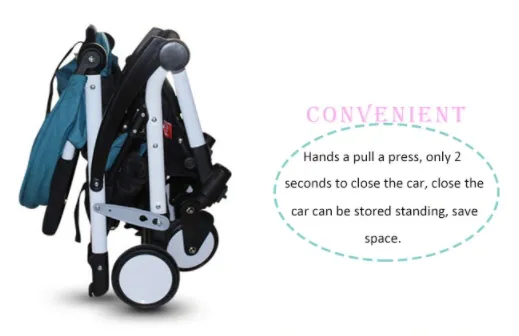
- Afrikaans
- Albanian
- Amharic
- Arabic
- Armenian
- Azerbaijani
- Basque
- Belarusian
- Bengali
- Bosnian
- Bulgarian
- Catalan
- Cebuano
- Corsican
- Croatian
- Czech
- Danish
- Dutch
- English
- Esperanto
- Estonian
- Finnish
- French
- Frisian
- Galician
- Georgian
- German
- Greek
- Gujarati
- Haitian Creole
- hausa
- hawaiian
- Hebrew
- Hindi
- Miao
- Hungarian
- Icelandic
- igbo
- Indonesian
- irish
- Italian
- Japanese
- Javanese
- Kannada
- kazakh
- Khmer
- Rwandese
- Korean
- Kurdish
- Kyrgyz
- Lao
- Latin
- Latvian
- Lithuanian
- Luxembourgish
- Macedonian
- Malgashi
- Malay
- Malayalam
- Maltese
- Maori
- Marathi
- Mongolian
- Myanmar
- Nepali
- Norwegian
- Norwegian
- Occitan
- Pashto
- Persian
- Polish
- Portuguese
- Punjabi
- Romanian
- Russian
- Samoan
- Scottish Gaelic
- Serbian
- Sesotho
- Shona
- Sindhi
- Sinhala
- Slovak
- Slovenian
- Somali
- Spanish
- Sundanese
- Swahili
- Swedish
- Tagalog
- Tajik
- Tamil
- Tatar
- Telugu
- Thai
- Turkish
- Turkmen
- Ukrainian
- Urdu
- Uighur
- Uzbek
- Vietnamese
- Welsh
- Bantu
- Yiddish
- Yoruba
- Zulu
Aug . 29, 2024 10:17 Back to list
How to Adjust Derailleur on a Mountain Bike
How to Adjust the Derailleur on Your Mountain Bike
Adjusting the derailleur on your mountain bike is an essential skill that every cyclist should learn. A properly adjusted derailleur ensures smooth shifting, enhancing your riding experience and prolonging the life of your bike's components. Here’s a step-by-step guide to help you master this crucial maintenance task.
Tools Required To start, you will need a few tools, including a Phillips screwdriver, a 5mm Allen wrench, and a derailleur hanger alignment tool if necessary. Make sure you also have a clean workspace and some bike lubricant on hand.
Step 1 Inspect the Derailleur Before making any adjustments, visually inspect the derailleur for any bends or damage. If the derailleur hanger is bent, it can lead to misalignment, causing poor shifting performance. If you notice any issues, straighten the hanger or replace it if it's beyond repair.
Step 2 Set Up the Bike Place your bike in a repair stand or flip it upside down. Shift your chain to the smallest chainring and the smallest rear cog. This position reduces tension on the derailleur and makes adjustments easier.
how to adjust derailleur mountain bike

Step 3 Adjust the Limit Screws The derailleur has two limit screws, labeled “H” (high) and “L” (low). These screws control how far the derailleur can move, preventing the chain from falling off into the spokes or the frame. To adjust
- High Limit Screw (H) Shift into the smallest rear cog. Check if the derailleur is aligned properly with the cog. If not, turn the H screw clockwise to move the derailleur closer or counterclockwise to move it farther away. - Low Limit Screw (L) Shift to the largest rear cog. Repeat the adjustment process for the L screw to ensure the derailleur doesn’t push the chain off the cog.
Step 4 Adjust Cable Tension Next, check the cable tension. If the shifts are sluggish or the derailleur struggles to keep up, you may need to increase the tension. This can be done using the barrel adjuster located on the shifter or the derailleur. Turn it counterclockwise to increase tension, which should help improve shifting performance.
Step 5 Test the Shifting Now, it's time to test your adjustments. Gradually shift through all the gears, ensuring smooth transitions and proper alignment. If you notice any hesitation or misalignment, fine-tune the limit screws and cable tension as needed.
Final Thoughts Regularly maintaining and adjusting your derailleur will enhance your mountain biking experience. By following these steps, you’ll ensure that your bike shifts smoothly, allowing you to focus on what truly matters—enjoying your ride! Remember, practice makes perfect, so don’t hesitate to tweak and adjust as necessary. Happy cycling!
-
The Ultimate Kids' Four-Wheeler Experience
NewsJul.09,2025
-
The Ultimate Guide to Mountain Bikes: Gear Up for Your Ride
NewsJul.09,2025
-
The New Age of Cycling: Electric Bikes for Every Rider
NewsJul.09,2025
-
The Best Kids Bicycles: Ride in Style and Safety
NewsJul.09,2025
-
The Best 3-Wheel Scooters for Kids: Fun, Safety, and Adventure
NewsJul.09,2025
-
Revolutionize Your Ride: Affordable Electric Bikes
NewsJul.09,2025
-
Finding the Perfect Mountain Bike for Every Rider
NewsJul.09,2025



